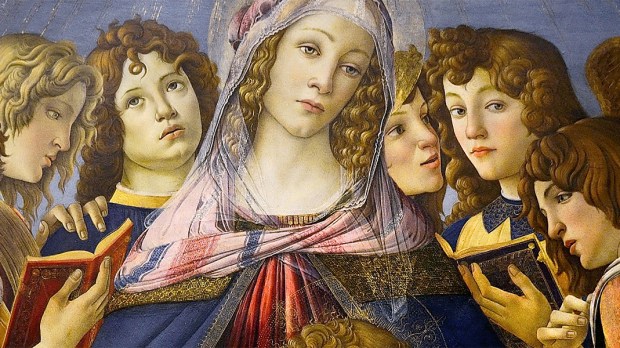Experts working to restore what they believed to be an imitation of a famous Botticelli painting were surprised to discover it was created by the master’s own workshop. The revelation came after English Heritage conservators cleared the painting of thick yellow varnish. Extensive testing of the varnish, as well as the other materials used, traced the duplicate painting right back to Botticelli’s 15th-century workshop in Florence.
Rachel Turnbull, English Heritage’s senior collections conservator, explained to BBC that the painting’s origins were confirmed thanks to consultations with experts at the Victoria and Albert Museum and the National Gallery, and the use of modern technology:
“Stylistically it was too similar to be an imitation, it was of the right period, it was technically correct and it was painted on poplar, a material commonly used at the time. After removing the yellowing varnish, X-ray and infrared examination revealed under-drawing, including changes to the final composition uncommon in straight imitations.”
The painting was assumed to be a forgery because it was smaller than the original and was missing some details. Most strikingly, the forgery is missing two faces, one at either side of Mary’s head. The original painting, on display at the Uffizi Gallery in Florence, also features more of the angel’s wings than the copy.
Professor Paul Joannides, emeritus professor of art history at the University of Cambridge, explains that it was not uncommon for artists to maintain an active studio that produced versions and adaptations of their most famous works. The master himself might begin or sketch out a piece and then assign it to his apprentices to complete. These works would presumably sell for a lower price, but would help the artist survive while they worked on their next piece. This practice would also help keep the artist in the public eye, as more people would be able to view their paintings.
“It is only relatively recently, with more highly developed methods of technical examination, that the status of such pictures can be — at least to an extent — determined,” Joannides told BBC.
Now that the copy is known to be authentically from the workshop, its value is certain to skyrocket, as it is now thought to be the closest version to Botticelli’s 1487 masterpiece. The painting, which features Mary holding the infant Jesus and a pomegranate while surrounded by angels, is set to go on display at Ranger’s House in London from April 1.

